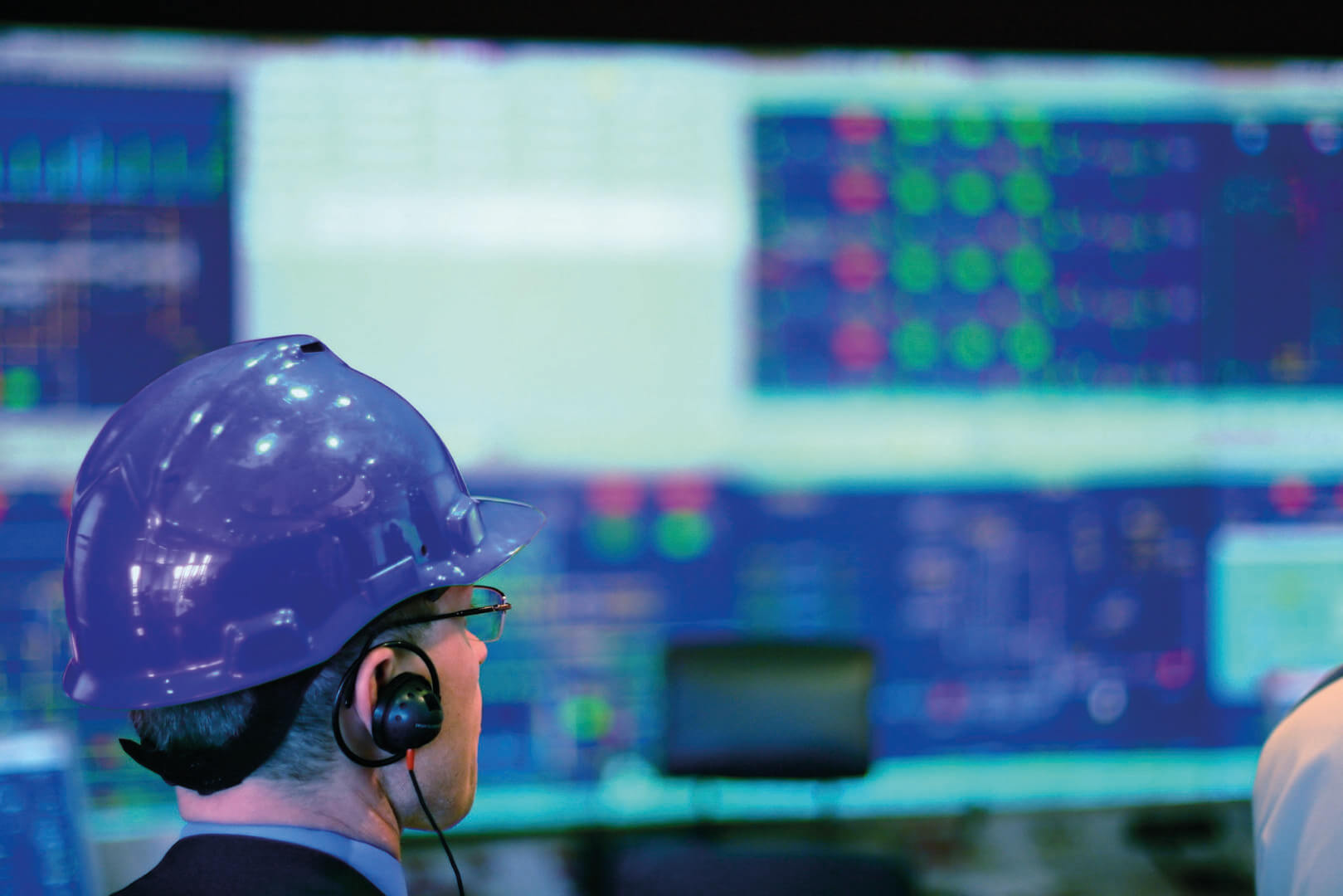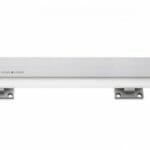According to the Centre for Alternative Technology (CAT), Britain is capable of generating 100 per cent of its energy supply from clean sources or carbon neutral back-ups. In an environment increasingly reliant on renewables, Martyn Williams, managing director of industrial software provider COPA-DATA UK, explains how energy managers can adopt new technologies to better manage and monitor these volatile generation sites.
During 2018, coal was responsible for just one per cent of Britain’s total energy electricity generation. This resulted in the country’s coal-fired power stations remaining entirely unused for twelve days in June — a longer period than in 2016 and 2017 combined.
With renewables taking an increasingly greater share of the country’s energy consumption, Britain is on course to meet its renewable targets of 30 per cent renewable generation by 2020. However, transitioning to this form of power supply is not without challenges.
Transitioning to smart grids
Even today, cost is one of the biggest barriers to the adoption of renewable energy. Developed countries like the UK have a mature fossil-fuel infrastructure that’s been around for over a hundred years. Transitioning to a renewable alternative is, in many cases, more expensive and requires much higher initial investment. The same is true for developing countries where renewable technology is even more cost prohibitive.
Britain’s energy infrastructure, originally designed to run on fossil-fuels, has been forced to adapt. The grid is now used to distribute energy generated from both fossil-fuel and renewable sources. This has seen the expansion of smart grids — a grid which uses control and communication in a specific way — to avoid the need for costly expansion of existing cable and wire infrastructures.
Over the next few decades, billions of pounds will be spent on Britain’s energy network. While some of this is required to maintain the existing system and replace ageing equipment, the creation of smart grids will also require investment in new technologies.
In fact, this requirement has encouraged a pledge by Britain’s leading electricity network operators, including SSE Networks and UK Power Networks, which promises to deliver £17 billion of smart grid infrastructure by 2050.
Managing uncertainty
A key differentiator of smart grids is the integration of renewable energy sources. Unlike fossil fuels, renewable sources do not generate energy at a pre-determined level. As a result, operators cannot accurately predict their output without technology investments.
Wind farms provide a useful demonstration of this uncertainty. Using historical data, an operator can estimate how often the farm will generate power consistently but making completely accurate predictions is almost impossible. In fact, energy output from a turbine can drop without warning — and there is no proven method to precisely determine when output will improve.
The case is similar for photovoltaic (PV) solar farms. In fact, hydro-electric power is the only energy source that can be physical controlled. At these plants, water can be stored in reservoirs and released when required, thus simulating the natural generation of hydro-power.
The volatility of renewable energy sources can also create problematic surplus situations. Let’s say wind speeds were to dramatically increase. If unprepared, the grid may not be able to handle the sudden surge in power from a wind power farm and this could cause power outages. In fact, there have been instances of operators resorting to paying customers to use excess electricity to balance this unmanageable surplus.
Reserve power flow, or back feeding, is one method of managing this excess energy. However, back feeding isn’t exclusively for renewable sources and occurs regularly on small-scale power grids, usually during the middle of the day when people are out of their homes. As residential energy demand during these periods is low, some of the generated electricity can be fed back to a transformer through the network.
Traditionally though, distributed systems did require back feeding. Most of the generation came from large-scale fossil-fuel sources which were located on the main network, therefore the power would flow predictably onto smaller systems.
However, increasing renewable energy sites, as well as microgeneration sites, means energy volatility is increasing, causing more occurrences of back feeding, as well as a new need for energy storage.
Forecasting generation
Improved forecasting could be used to alleviate this challenge. However, it is argued that forecasts are often provided solely as a comfort to decision makers — that’s network operators, end customers and investors in renewable energy. Forecasts, due to their limitations, are not used in the daily operations of energy sites.
Accurate forecasting requires a complicated cross-disciplinary approach, examining mathematics, statistics, meteorology and an accumulation of historical data from the generation site. Even then, the shortcoming of a forecast is that it is simply an extrapolation of what has occurred, rather than certain knowledge about the future.
By employing more accurate forecasting however, operators could better manage supply and demand. New technology is already beginning to improve the exactness of predictions by using advanced computer models. However, it is recommended that this is used in combination with real-time system monitoring.
Smart grid control software, like COPA-DATA’s zenon, allows operators to actively manage grid behaviour in real-time. Therefore, the operator can react appropriately should the site begin to generate more, or less power than expected.
This real-time insight doesn’t lessen the volatility of renewable generation, but it can improve awareness of a system’s conditions. For instance, the software could immediately alert an operator when wind speeds increase. By correlating this data with information from the wider network, the software could provide a warning that a surplus of energy will occur, and back feeding is required.
Back feeding isn’t always a feasible option, however. In some instances, excess energy must be stored. Research by market analyst Aurora Energy Research, suggests that to meet its renewable energy targets, Britain requires an additional 13 GW of energy storage in order to successfully balance the grid.
Energy storage
Like many other forms of energy technology, a major challenge of implementing energy storage is related to cost. Aside from the water storing methods of hydro-electric plants, traditional electricity grids have little to no method of storing excess power. In fact, Aurora Energy Research’s paper states that deploying energy storage on Britain’s network will require a £6 billion investment.
Energy storage plays an important role in creating a flexible grid. When there is more power supply than demand, excess energy needs to be stored safely to avoid wastages. Similarly, when demand is greater than supply, energy storage allows storage facilities to discharge this stored energy back to the grid.
With increasing reliance on renewables, energy storage facilities will be essential buffers for excess power. While there are copious research projects dedicated to the development of energy storage methods, including compressed air, thermal storage and battery storage, these technologies are still largely in their infancy.
Across the continent, there are several successful examples of using batteries to store excess renewable energy. This includes a BMW commissioned battery storage farm in Leipzig, Germany, which is houses on the grounds of its own wind generation site. The site operates using 700 second-life electric vehicle batteries, which are used to house excess wind power before it is fed back into the wider grid.
Without knowledge of when, where and how much energy is required on the grid, however, battery storage is redundant. Feeding this energy back to the network requires real-time insight into the state of the gird. Large scale installations, like BMW’s facility in Germany, will use intelligent software to constantly monitor and record demand for power and therefore supply appropriately.
Again, this requires investment from the facility itself, but is essential for the creation of a truly smart energy grid.
Transitioning from a traditional energy network to a fully functioning smart grid is incredibly complex. Britain’s ageing infrastructure means that costs maintaining and repairing these facilities are essential, but investments in new technology cannot be overlooked.
Britain may be capable of generating 100 per cent of its energy supply from clean sources, but until the nation has adopted technologies to efficiently manage, store and distribute this energy, this goal will not come to fruition.








